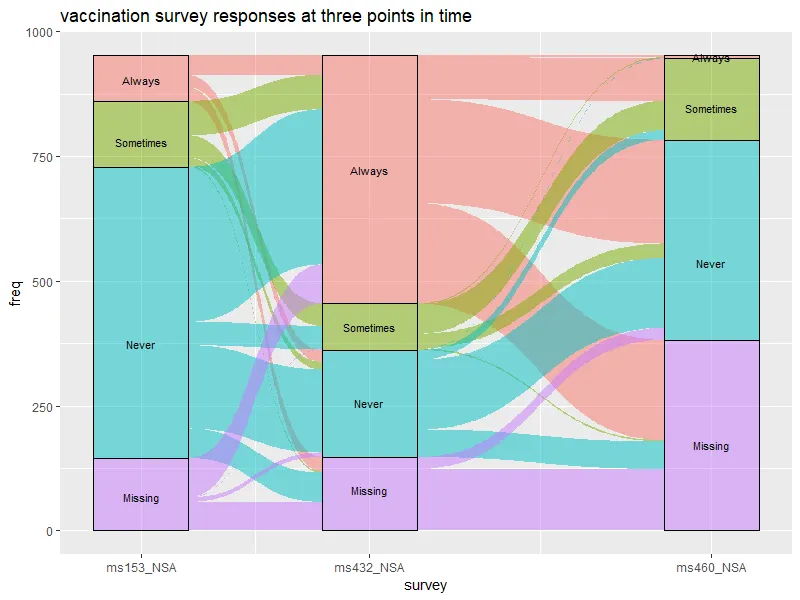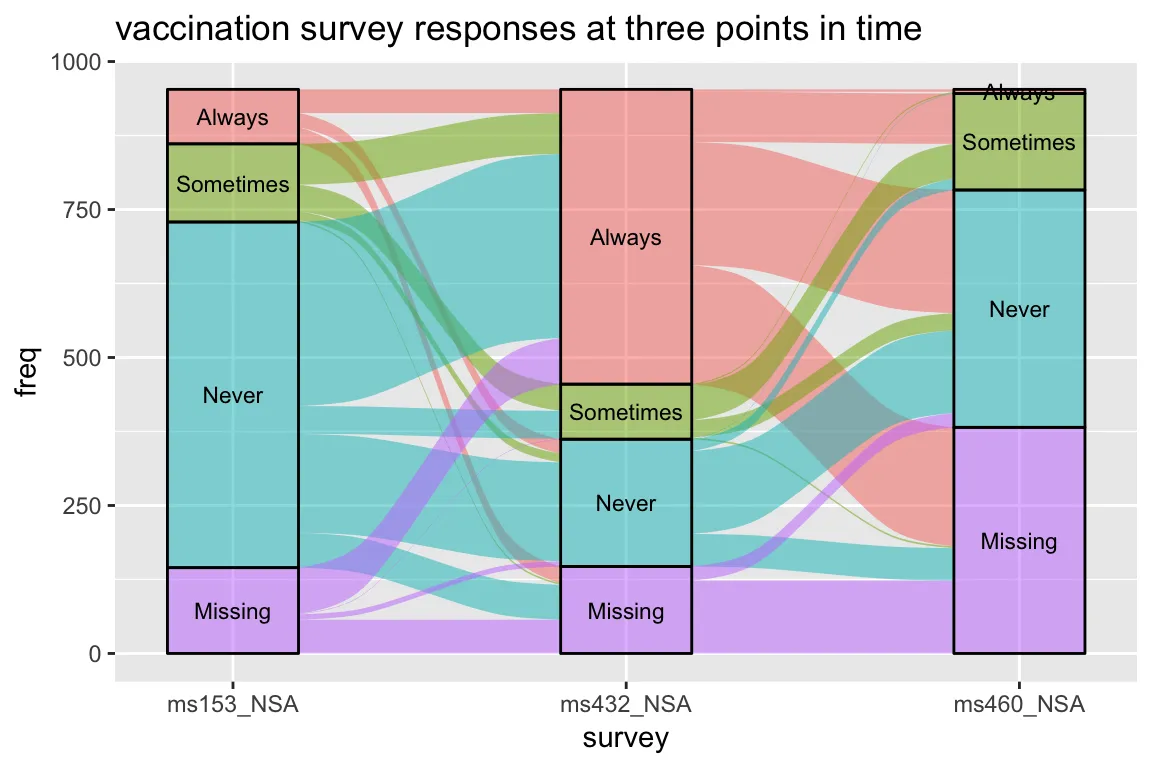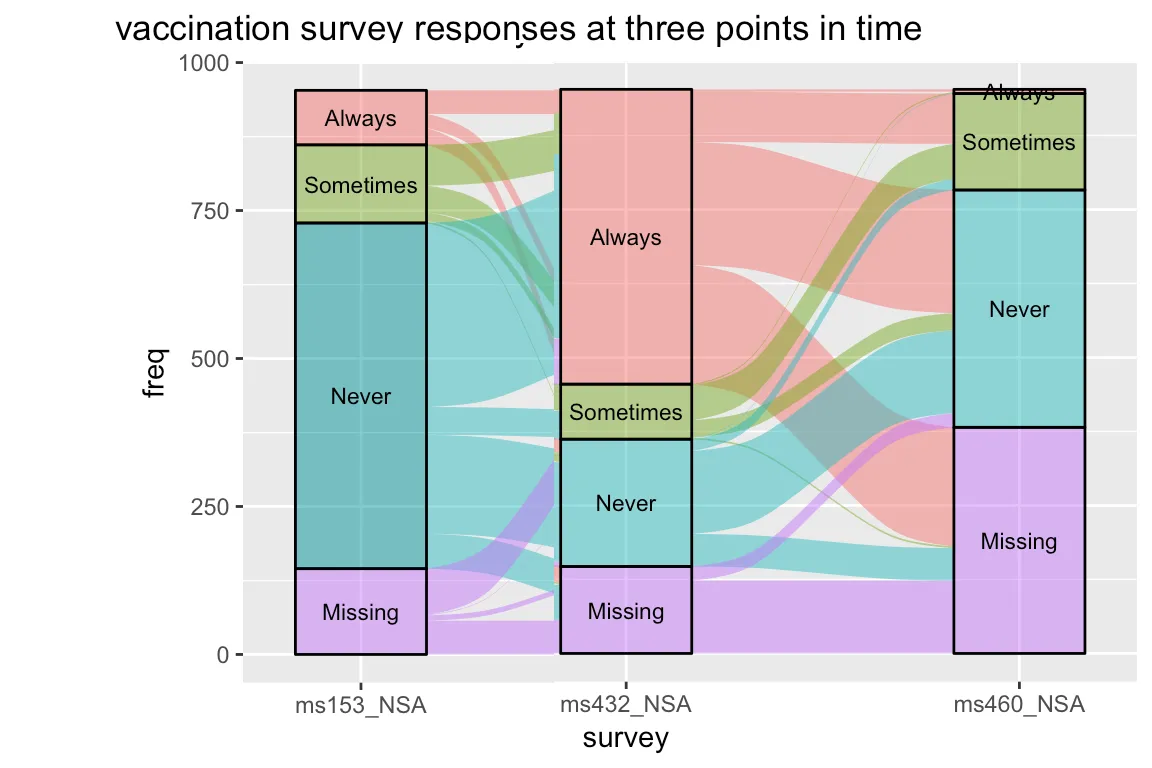以下是一种黑客的方法
数据操作:
library(dplyr)
p <- ggplot(vaccinations,
aes(x = survey, stratum = response, alluvium = subject,
y = freq,
fill = response, label = response)) +
scale_x_discrete(expand = c(.1, .1)) +
geom_flow() +
theme(legend.position = "none") +
ggtitle("vaccination survey responses at three points in time")
shift.amt = 0.2
new.df <- layer_data(p) %>%
mutate(xmin = ifelse(x == 2, xmin - shift.amt, xmin),
xmax = ifelse(x == 2, xmax - shift.amt, xmax),
x = ifelse(x == 2, x - shift.amt, x))
剧情:
library(ggforce)
ggplot(new.df, aes(fill = fill)) +
geom_diagonal_wide(data = . %>%
select(alluvium, fill, side, xmin, xmax, ymin, ymax) %>%
group_by(alluvium,) %>%
summarise(fill = fill[side == "start"],
x = list(c(xmax[side == "start"], xmin[side == "end"],
xmin[side == "end"], xmax[side == "start"])),
y = list(c(ymax[side == "start"], ymax[side == "end"],
ymin[side == "end"], ymin[side == "start"]))) %>%
tidyr::unnest(),
aes(x = x, y = y, group = alluvium),
alpha = 0.5) +
geom_rect(data = . %>% group_by(x, stratum, fill) %>%
summarise(xmin = min(xmin), xmax = max(xmax),
ymin = min(ymin), ymax = max(ymax)),
aes(xmin = xmin, xmax = xmax, ymin = ymin, ymax = ymax),
alpha = 0.5, colour = "black") +
geom_text(data = . %>% group_by(x, stratum, label) %>%
summarise(y = mean(range(y))),
aes(x = x, y = y, label = label),
inherit.aes = FALSE, size = 3) +
scale_x_continuous(breaks = sort(unique(new.df$x)),
labels = layer_scales(p)$x$get_labels()) +
scale_fill_identity() +
labs(title = "vaccination survey responses at three points in time",
x = p$labels$x, y = p$labels$y)



